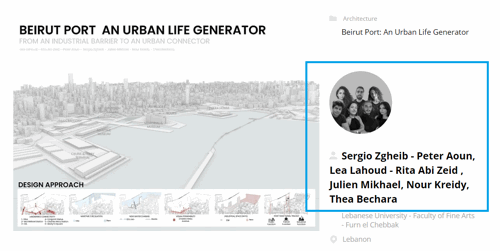City Without a Horizon

Project idea
Can utopian architectural changes be embraced at the local urban scale?
When designed with human experience and social inclusivity in mind, visionary urban interventions can significantly transform everyday life. By introducing shared spaces, vertical connections, and layered development, architecture can enhance social interaction, foster community ties, and reshape how people live and engage.
The proposal envisions the transformation of the Aktash and Bregu i Diellit neighborhoods in Prishtina into a cohesive, future-oriented urban fabric. Currently fragmented and underutilized, these areas are reimagined through a strategic model of urban densification, vertical layering, and contextual regeneration.
The ambition is to revitalize the neighborhoods while safeguarding their local identity, social integrity, and human scale. Rather than displacing the existing community, the project introduces a framework for inclusive growth, where new urban forms integrate with the existing structure, creating a dynamic yet grounded environment for contemporary urban living.
Project description
The neighborhoods of Aktash and Bregu i Diellit represent two of Prishtina’s most emblematic yet underperforming urban areas. Despite their central location and historical importance, both districts suffer from spatial fragmentation, lack of cohesive planning, and architectural inconsistency.
Aktash, once characterized by low-rise housing and informal community networks, has gradually become a zone of isolated developments lacking integration with public infrastructure. Buildings here often disregard the street edge, creating a disconnected and inward-facing urban fabric. Public spaces are limited, and pedestrian movement is frequently compromised by vehicular dominance and insufficient green infrastructure.
On the other hand, Bregu i Diellit, one of the largest post-war residential expansions in the city, exhibits a rigid, repetitive housing typology rooted in modernist planning principles. While originally designed for density and efficiency, the area has experienced uncoordinated infill, deteriorating public amenities, and limited architectural variation. As a result, the district now faces a decline in spatial quality, with monofunctional blocks, inactive ground floors, and a lack of urban vibrancy.
Together, these neighborhoods reflect a missed opportunity: a dense urban population with limited access to quality public space, and a built environment that fails to foster interaction, identity, and inclusivity. This project emerges as a strategic intervention, aiming not to erase the past, but to recalibrate the urban and architectural logic toward a more integrated, layered, and socially connected future.
The project is structured around the principle of layered urbanism, organizing the city into distinct yet interconnected levels to encourage density, functionality, and community interaction:
Basement Level – Activated Infrastructure
A reimagined underground level introduces a vibrant public realm featuring retail spaces, cultural institutions, and civic functions. These elements extend the social life of the city beneath the surface and serve as an anchor for urban vibrancy.
Ground Level – Reinventing the Urban Core
Existing buildings are retained and adapted to create an open, walkable, and human-centric public environment. The ground level is transformed into a continuous social landscape with plazas, pedestrian routes, and gathering spaces that reinforce everyday urban life.
Elevated Platform – Hybrid Living Layer
Above the public level, an elevated architectural layer hosts modular residential units and shared green spaces. This platform operates as a structural and social bridge between old and new, offering residents privacy, connectivity, and community in equal measure.
Vertical Extensions – Symbolic Urban Markers
Rising from the elevated platform are a series of mixed-use towers, conceived as symbolic and functional beacons. The uppermost volumes of these towers are designed to rotate slowly over time, evoking the city’s evolution and aspirations. These vertical elements integrate housing, coworking zones, wellness centers, and leisure facilities, composing a self-sufficient vertical neighborhood.
At the heart of the project is the ambition to redefine urban living by interweaving density with inclusivity, form with function, and architecture with community.
Technical information
Project Location: Aktash & Bregu i Diellit, Prishtina, Kosovo
Urban Typology: Mixed-use vertical densification and adaptive regeneration
Design Framework:
Layered Urban Structure (Basement → Ground → Platform → Towers)
Preservation & Activation of existing urban fabric
Integrated Public Realm across all levels
Flexible Housing Models with co-living, private units, and shared amenities
Key Features:
Rotating Tower Caps symbolizing continuous urban evolution
Vertical Connectivity through bridges, ramps, and circulation cores
Social Infrastructure: Communal gardens, cultural nodes, and terraces
Multi-level Green Integration with ecological corridors and rooftop biodiversity
Sustainability Strategies:
Adaptive reuse of existing structures
Passive design for daylight and ventilation
Integrated green spaces for climate resilience
Prioritization of walkability and low-carbon mobility
Symbolism & Identity:
The rotating towers serve not only as spatial solutions but also as urban metaphors—markers of transformation, continuity, and resilience in an ever-changing cityscape.
















